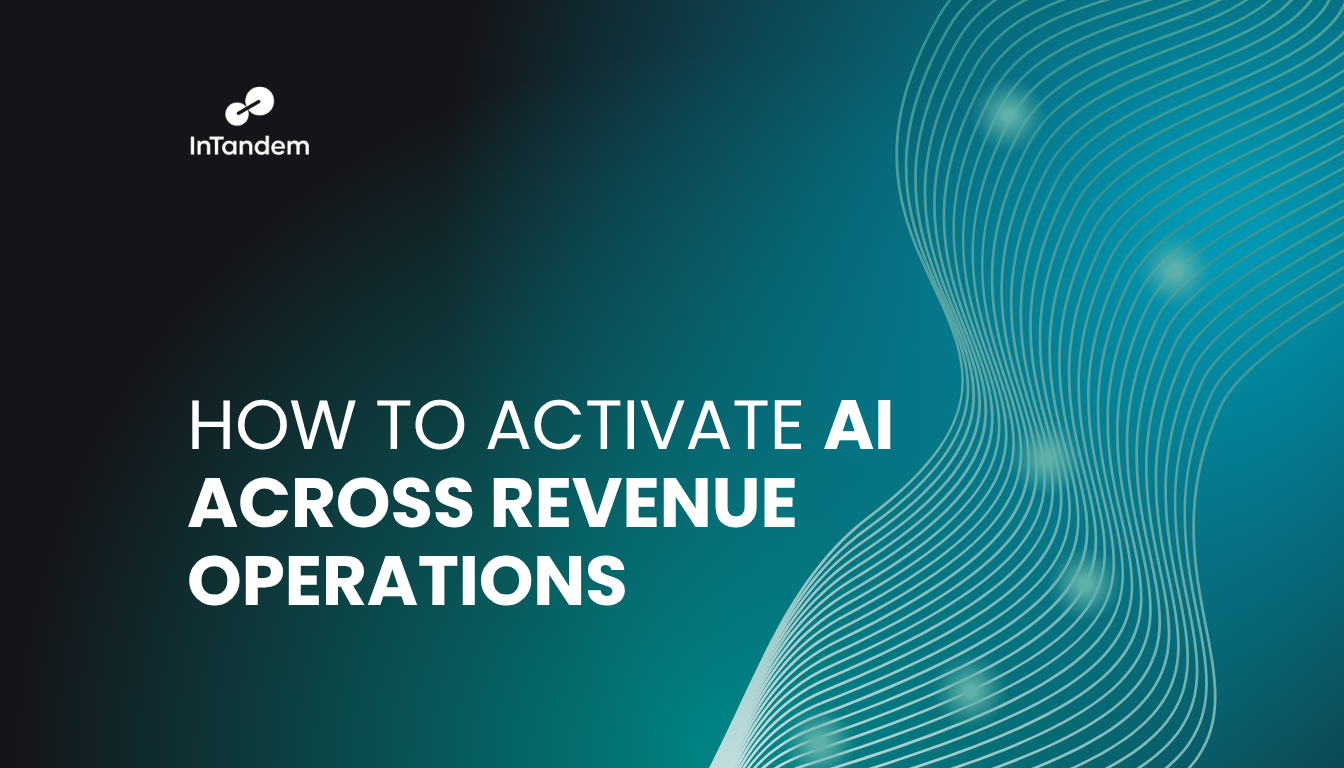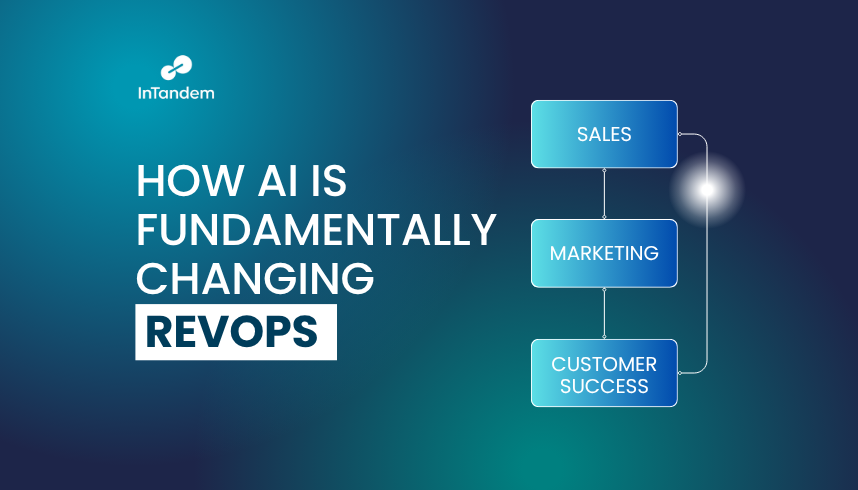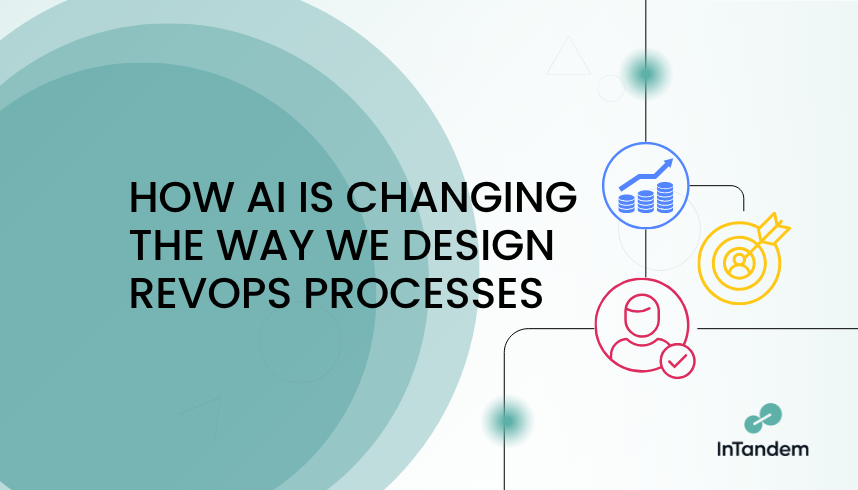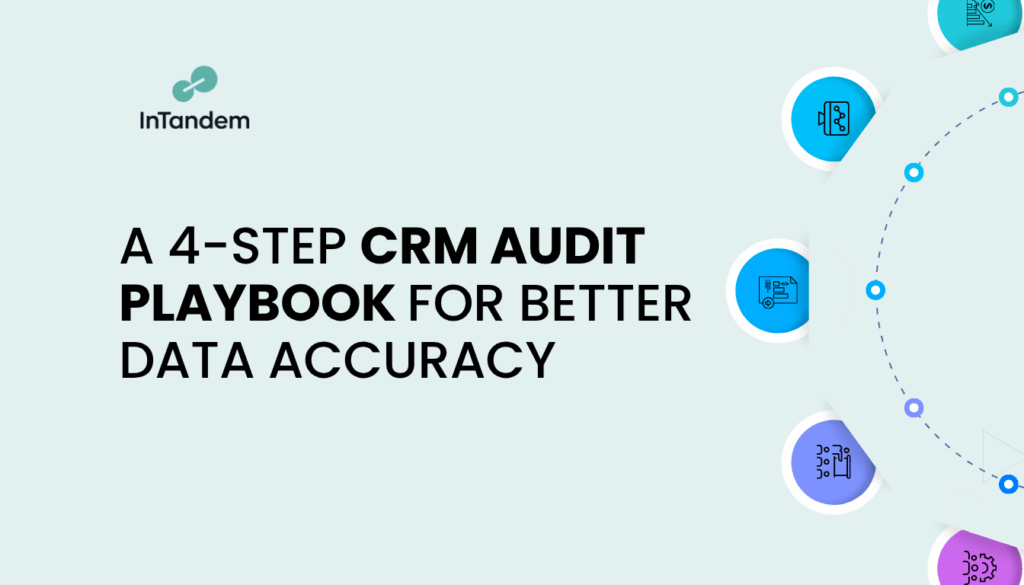How to Activate AI Across Revenue Operations

Article Highlights
Revenue leaders are under pressure. According to McKinsey, companies that integrate advanced analytics into their commercial functions see a 15-25% increase in revenue. Yet, most RevOps teams still rely on manual spreadsheets, fragmented tools, and gut feel over data. AI isn’t just hype. It’s a strategic lever for unlocking speed, scale, and precision across the revenue engine.
In this playbook, we’ll show you how AI can supercharge your RevOps stack across Marketing, Sales, and Customer Success. We’ll break down use cases, tools, implementation roadmaps, and key considerations. This is not a generic AI overview. It’s a field guide built for operators who are expected to drive outcomes fast.
This is built for:
- CROs and VP Revenue driving top-line growth
- CMOs, Heads of Sales, and CS leaders under pressure to do more with less
- Heads of RevOps who need to get ahead of the AI curve without burning out their team
Strategic Framework for AI in RevOps
What AI Actually Means for Revenue Operations
AI in RevOps isn’t about replacing humans. It’s about:
- Automating repetitive workflows (think: lead routing, reporting)
- Enhancing decision-making through predictive models (think: churn risk, lead scoring)
- Generating content, forecasts, or action items faster and more accurately
Don’t Skip This: AI Needs Clean, Structured Data
Before AI can add value, your systems need clean, structured, and connected data. Ensure unified definitions across leads, contacts, accounts, and activities. AI cannot fix fragmented schemas.
Start by auditing your CRM hygiene, field usage, and integration consistency across marketing, sales, and CS tools. Without this foundation, your AI outputs will be unreliable, or worse, misleading.
Three Levels of AI Activation in RevOps
- Automation (tasks)
- CRM data enrichment
- Campaign tagging
- Call transcription
- Intelligence (insights)
- Predictive lead scoring
- Forecast accuracy
- Churn probability
- Orchestration (strategy)
- Journey personalization
- Next-best-action engines
- Revenue optimization scenarios
AI Use Cases by Function
Marketing Operations
Most marketing teams still rely on outdated lead scoring, manual segmentation, and inconsistent attribution, which leads to inefficient spend and missed opportunities. AI helps fix these gaps by automating segmentation, enhancing lead scoring with real-time data, and surfacing high-intent accounts earlier in the buyer journey, ultimately lowering CAC and improving campaign ROI.
Top AI Use Cases:
- Predictive MQL scoring
- Attribution modeling (multi-touch)
- Dynamic segmentation
- Content personalization at scale
Checklist:
- Use AI tools to identify and refine your Ideal Customer Profile (ICP) by analyzing historical conversion data.
- Deploy AI-based lead scoring models that learn from engagement signals, content interactions, and firmographics.
- Implement data enrichment tools like Clearbit or Cognism to enhance lead records, and layer NLP-based classification systems for tagging based on job titles or keywords.
- Automate lead-to-account matching using AI tools to avoid duplication and misalignment.
- Run multi-touch attribution models to analyze the true influence of campaigns across the funnel.
- Use AI for content performance insights and auto-personalization of landing pages and email sequences.
- Create AI-based audience segments dynamically based on evolving behavioral and firmographic traits
Sales Operations
Sales teams are often bottlenecked by inaccurate forecasts, messy CRM data, and lengthy rep ramp times. AI addresses these issues by enriching data, predicting deal outcomes, surfacing coaching moments, and shortening sales cycles—freeing up reps to focus on selling, not admin work.
Top AI Use Cases:
- Forecasting using historical patterns and external signals
- Deal health scoring based on call transcripts and activity
- Automated call summarization and next-step extraction
Checklist:
- Clean up CRM records by integrating AI-powered data enrichment tools (e.g., ZoomInfo, Apollo, Clearbit).
- Implement an AI forecasting tool (e.g., Clari, BoostUp) and compare its output vs. historical manual forecasts.
- Use AI to track deal activity and score deals based on email responsiveness, call engagement, and sentiment.
- Automate call transcriptions and next-step summaries using tools like Gong or Chorus.
- Identify deal risks early by training AI models on closed-lost deals and behavior patterns.
- Reduce ramp time by feeding new reps battle cards and insights synthesized from historical data using AI
- Train frontline managers to use AI to spot pipeline gaps and coaching opportunities faster.
Customer Success Operations
Customer success teams often operate reactively, lacking reliable health scores and visibility into churn risk. AI enables proactive retention strategies by tracking product usage patterns, surfacing churn signals early, and generating personalized renewal or upsell plays driving both retention and expansion.
Top AI Use Cases:
- Churn prediction models
- AI-driven CS playbooks
- Renewal and upsell likelihood scoring
Checklist:
- Analyze historical churn cases and build an AI churn prediction model with behavior, ticket volume, and sentiment inputs.
- Use AI to create dynamic health scores that adapt based on engagement, feature adoption, and satisfaction scores.
- Set up automated alerts for high-risk accounts based on usage drop-offs, support escalations, or NPS scores.
- Enable AI-based playbooks that suggest personalized retention or upsell actions for each account segment.
- Leverage AI rules or product usage signals (via tools like Gainsight or custom-built dashboards) to flag accounts showing expansion potential.
- Generate renewal readiness reports monthly using concise summaries of engagement trends and ROI generated via AI tools.
- Route support interactions or escalations using AI to reduce response time and CSAT impact.
AI Only Works if Your Funnel Does
Before layering in AI, ensure your GTM processes are tightly aligned. Many AI tools depend on clean handoffs between marketing, sales, and CS, but if your definitions of an MQL, SAL, or customer health score are unclear, automation will only amplify the confusion.
Get your process map straight, document key lifecycle stages, and align funnel definitions across all departments. Then, and only then, should you train AI models to operate within that framework.
Tools and Platforms to Know
Marketing Ops Tools:
- Mutiny: AI-powered web personalization platform that tailors site experiences by segment to increase conversion across funnel stages.
- 6sense: Account-based orchestration platform that uses intent data and predictive analytics to surface in-market buyers and prioritize outreach.
- Metadata.io: AI campaign execution engine that automates targeting, testing, and budget allocation to drive pipeline growth efficiently.
- Clay – Aggregates data from 100+ sources and uses GPT-4 to personalize cold emails and campaigns. Ideal for campaign orchestration and intent-based segmentation.
- Smartlead – Automates high-volume cold outreach and email warm-up across multiple inboxes. Ideal for managing deliverability and running multi-channel drip campaigns at scale.
Sales Ops Tools:
- Gong : Conversation intelligence platforms that analyze calls, extract insights, and generate AI summaries to coach reps and accelerate deals.
- Clari: Revenue forecasting and deal inspection platform that uses real-time signals and AI to improve forecast accuracy and pipeline confidence.
- People.ai: Revenue operations platform that captures rep activity across systems and maps it to pipeline to identify gaps and replicate success.
- Instantly – Automates high-volume cold email outreach and manages deliverability. Optimizes outbound pipeline and improves response rates.
CS Ops Tools:
- Gainsight: Customer success platform with AI-driven health scoring and automated playbooks to proactively manage retention and expansion.
- Totango: Usage intelligence and engagement platform that scores customer behavior in real time to trigger lifecycle-based CS workflows.
- Revenue.io: Conversation intelligence and real-time coaching platform that equips CS teams to handle renewals, upsells, and escalations effectively.
- Fin: AI chatbot builder that enables CS teams to deploy smart, self-service support experiences without engineering overhead.
- ChurnZero: A Customer success platform that uses AI-powered health scoring, usage tracking, and automation to help CS teams proactively manage renewals, prevent churn, and drive expansion.
Infra + Workflow:
- N8N / Zapier: AI automation workflows
- OpenAI / Claude: Embedded LLMs for summarization + content gen
Don’t Take Tool Claims at Face Value
Not all AI is created equal. Ask tough questions when evaluating tools:
- What training data is this model using?
- How accurate is the predictive model based on our historical data?
- Can we test before we commit?
Require vendors to show precision, recall, or success benchmarks from similar organizations. And never skip a pilot phase, especially for tools that touch forecasts, scoring, or attribution.
How to Roll Out AI Without Burning Out Your Ops Team
Step 1: Prioritize High-Leverage Use Cases
Use the 80/20 rule. Focus on:
- High-frequency, low-complexity tasks
- Bottlenecks in reporting, attribution, handoffs
Example: Start with AI-generated follow-up emails from meeting notes, not full-fledged journey orchestration.
Step 2: Build Trust with Fast Wins
- Choose one use case with clear ROI (e.g., forecasting, lead scoring)
- Pilot it with a willing team
- Document and celebrate results (time saved, accuracy, revenue impact)
Step 3: Enable Your Team
- Train RevOps on prompt engineering basics
- Standardize AI policies (data use, human review required, etc.)
- Designate a RevOps AI Champion for tool testing + rollout
- Build a lightweight AI onboarding program for your RevOps team. This can include:
- Internal playbooks with examples of effective prompts
- Recorded tool walkthroughs and use case deep dives
- Dedicated Slack/Teams channels for peer support and experimentation
- Encourage a test-and-document mindset
Avoiding the Pitfalls of AI in RevOps
Common Mistakes
- Shiny Object Syndrome: Buying tools before solving problems
- DIY AI: Expecting RevOps to build from scratch without support
- Lack of Governance: No guardrails on what AI can and can’t do
Guardrails to Implement
- Require human review of AI-generated forecasts or messaging
- Track error rates and improvement deltas over time
- Align AI goals with GTM outcomes, not just tech adoption
- Ensure all AI initiatives comply with data privacy laws (e.g., GDPR, CCPA). Be transparent about how AI is used in outbound messaging, data enrichment, and customer support.
- Only train AI models using data your company is authorized to use — avoid feeding PII or sensitive customer data into third-party systems without proper controls.
Key Questions to Ask
- What processes are repeatable enough to benefit from AI?
- Where is our team spending the most manual time?
- Do we have clean enough data to feed AI engines?
What Great Looks Like: AI-Enabled RevOps Org
Org-Level Indicators
- Forecast accuracy that’s consistently close to target
- Clearer campaign attribution across the funnel
- Health scores that actually reflect customer reality
- Faster time from data to action
Talent Indicators
- RevOps team trained on prompt engineering
- GTM leaders rely on AI summaries and insights weekly
- Playbooks auto-updated based on AI learnings (e.g., deal velocity trends)
Execution Indicators
- Daily workflows automated (follow-ups, lead assignment)
- Weekly insights delivered (forecast risk, churn flags)
- Quarterly GTM plans adjusted using AI-powered dashboards
Final Recommendations
- Start Narrow, Scale Fast: Pick one RevOps process. Instrument it with AI. Prove the ROI. Expand.
- Invest in AI-Literate RevOps Talent: You don’t need PhDs. You need operators who know what to automate and what to keep human.
- Benchmark Everything: Every AI use case should be benchmarked against its manual version for speed, accuracy, or ROI.
- Be Ruthless About Use Case Fit: AI is not magic. It will not save broken processes or bad data.
- Own the Strategy, Not Just the Tooling: RevOps leaders should define the “why” behind AI adoption. Let the tools follow the business case.







